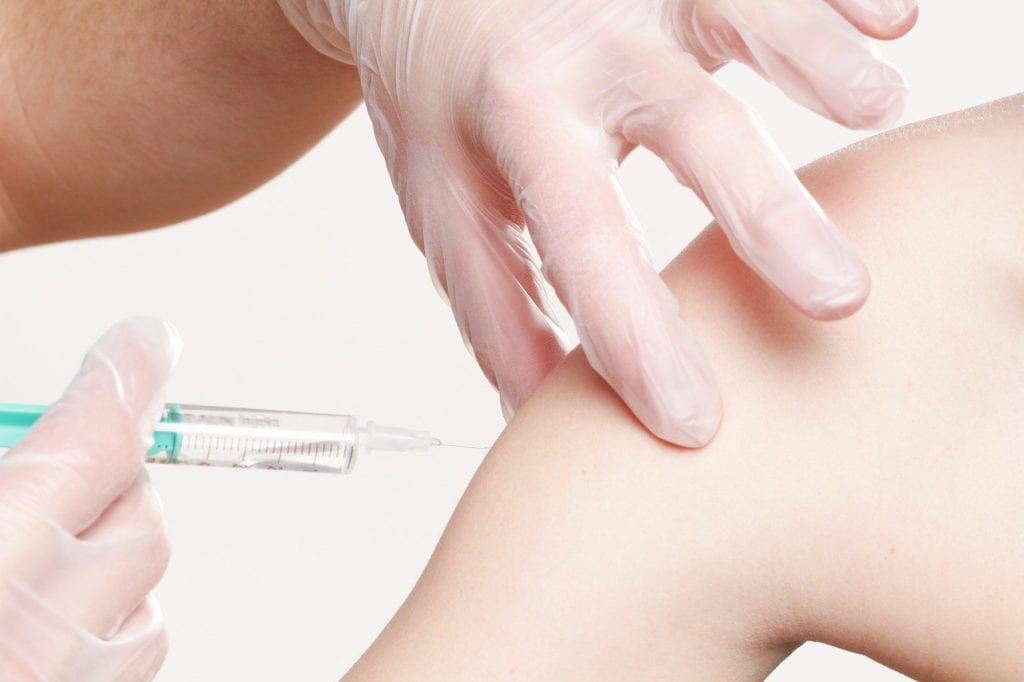Sean Boyle is a PhD candidate at Emory University. He just signed up to participate in a trial for a coronavirus vaccine when he doesn’t know the risks. That’s because no one does. He is one of the first in the world to get a vaccine, helping all of us understand if it’s safe and viable.
The quest is urgent but also must be done extremely carefully.
“We have to sprint, while also not tripping, falling and getting hurt.”
In 2017 he also stepped up to participate in a vaccine trial for Ebola. He said what convinced him to make that decision was seeing the first patient in the United States being treated at his medical school. The fear for the people in West Africa and for the spread in the US was palpable, and he wanted to be a part of what could potentially diminish this fear.
Sean explains how for him, the potential worldwide benefits of this vaccine outweigh his personal potential risks.
COVID-19 Vaccine Development
Experts are hoping for a vaccine within the next 12-18 months. That’s crazy for a process which typically takes years, or even decades. Some say it’s just wishful thinking. For reference, the fastest vaccine to ever be developed was for the mumps, and it took four years.
The Risk
Vaccines have to be tested on healthy people. For sick people enrolled in clinical trials, the potential risk is sometimes mediated by the fact that it could dramatically improve their personal life. For healthy people in vaccine trials, it will not benefit them to that extent personally, but the risk is still there.
A bad vaccine could be more dangerous than the virus.
For example, in 1976 the rushed development of a vaccine for the swine flu led to serious side effects, with millions developing a condition called Guillain-Barre Syndrome which leads to paralysis. 25% of the population was vaccinated that year.
A vaccine is a product that will be injected into a large portion of the world’s population. For that, it can’t do harm.
The research road to get vaccine development where it is now has been long and rocky. Many have become ill and lives have been lost along the way.
The stages of a clinical trial include
- 1- Assessing safety in a few people
- 2- Assessing dosage levels and desired immune response
- 3- Assesses whether the vaccine works to protect in real-life conditions
But for coronavirus, we’ve been compacting this timeline and speeding through. Human trials and animal trials began side by side.
The Upside
Thankfully for COVID-19, researchers had a head start. They have already been working for years on developing vaccines for coronaviruses, specifically SARS and MERS. There are two main approaches being examined.
1- Using RNA to stimulate an immune response. There is no risk for accidental infection because there’s actually no virus. In essence, it tricks the body to think the virus is there, and the body learns to defend against its potential attack in the future. There’s hope that this could be the fastest and safest approach. It’s also fast and easy to make. All that’s needed is the genetic sequence of the virus. But, this method has never been approved. We don’t know about potential side effects. Human trials will hopefully provide us more insight soon.
2- The second approach is using a viral vector which is genetically engineered and harmless to people, to carry a tiny bit of the virus into the body. This virus then causes an immune response without symptoms, and the body learns how to recognize the virus.
Of course any approach could have unexpected consequences, but researchers are working quickly, carefully, and diligently, to get a safe and effective vaccine to the people.
You can read more about these vaccines updates here.







